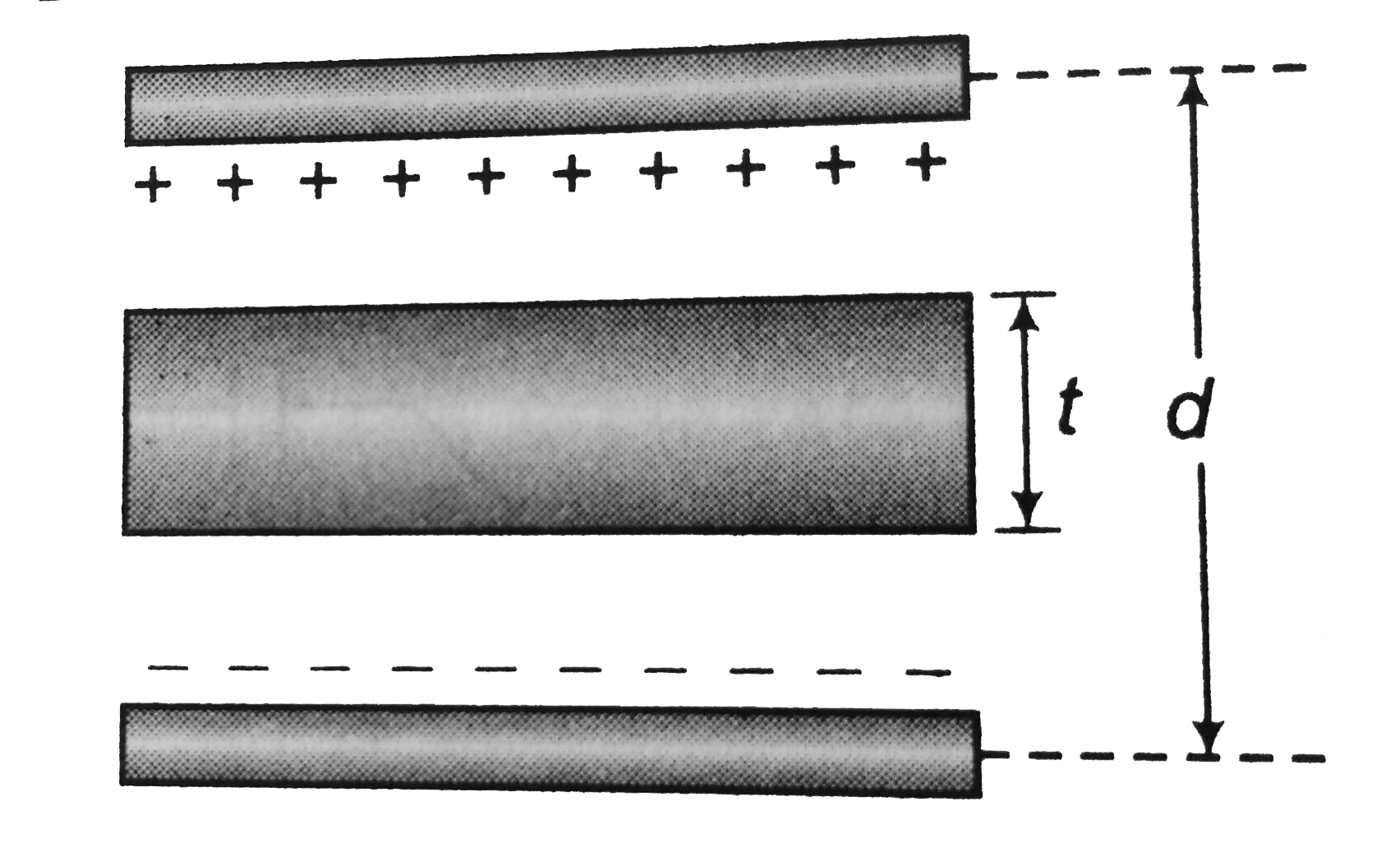The parallel combination of two air filled parallel plate capacitor of capacitance C and nC is connected to a battery of voltage, V. When the capacitors are fulley charged, the battery is removed and after that a dielectric material of dielectric constant K is placed between the two plates of the first capacitors. the new potential difference of the combined system is
nVK+n
V
VK+n
(n+1)V(K+n)
The correct Answer is:A
To solve the problem step by step, we will follow the outlined process:
Step 1: Determine the total charge when the capacitors are connected to the battery.
When the two capacitors, C and nC, are connected in parallel to a battery of voltage V, the total charge Q stored in the system can be calculated as follows:
Q=C⋅V+nC⋅V
Factoring out V:
Q=(C+nC)⋅V=(1+n)C⋅V
Step 2: Disconnect the battery.
Once the capacitors are fully charged, the battery is removed. The charge Q remains constant in the system.
Step 3: Insert the dielectric material.
When a dielectric material with dielectric constant K is inserted between the plates of the first capacitor C, the new capacitance C′ of that capacitor becomes:
C′=K⋅C
The second capacitor remains unchanged, so its capacitance is still nC.
Step 4: Calculate the equivalent capacitance of the system.
The two capacitors are still in parallel, so the equivalent capacitance Ceq of the system can be calculated as:
Ceq=C′+nC=K⋅C+nC=(K+n)C
Step 5: Find the new potential difference.
Using the formula for voltage V′ across the equivalent capacitance, we have:
V′=QCeq
Substituting the expressions for Q and Ceq:
V′=(1+n)C⋅V(K+n)C
The C terms cancel out:
V′=(1+n)V(K+n)
Final Answer:
Thus, the new potential difference of the combined system is:
V′=(1+n)V(K+n)
---
When the two capacitors, C and nC, are connected in parallel to a battery of voltage V, the total charge Q stored in the system can be calculated as follows:
Once the capacitors are fully charged, the battery is removed. The charge Q remains constant in the system.
When a dielectric material with dielectric constant K is inserted between the plates of the first capacitor C, the new capacitance C′ of that capacitor becomes:
The two capacitors are still in parallel, so the equivalent capacitance Ceq of the system can be calculated as:
Using the formula for voltage V′ across the equivalent capacitance, we have:
Thus, the new potential difference of the combined system is:
Topper's Solved these Questions
Similar Questions
Two capacitors of capacitance C and nC are connected in parallel. A battery of emf V is connected across the combination. Now the battery is removed and a dielectric constant K is inserted filling the space between the plates of capacitor of capacitance C. The final potential difference across the system is
View SolutionTwo identical parallel plate capacitors are connected in series to a battery of 100V. A dielectric slab of dielectric constant 4.0 is inserted between the plates of second capacitor. The potential difference across the capacitors will now be respectively
View SolutionA parallel plate capacitor having capacitance 12pF is charged bya battery to a potential difference of 10V between its plates. The charging battery is now disonnected and a porcelain slab of dielectric constant 6.5 is slipped between the plates. The work done by the capacitor on the slab is
View SolutionA parallel plate capacitor of capacitance 10μF is connected across a battery of emf 5 mV. Now, the space between the plates of the capacitors is filled with a deielectric material of dielectric constant K=5. Then, the charge that will flow through the battery till equilibrium is reached is
View SolutionTwo identical parallel plate capacitors are connected in series and then joined in series with a battery of 100V. A slab of dielectric constant K=3 is inserted between the plates of the first capacitor. Then, the potential difference across the capacitor will be, respectively.
View SolutionTwo parallel plate capacitors, each of capacitance 40 muF, are connected is series. The space between the plates of one capacitor is filled with a dielectric material of dielectric constant K =4. Find the equivalent capacitacne of the system.
View SolutionA parallel capacitor of capacitance C is charged and disconnected from the battery. The energy stored in it is E. If a dielectric slab of dielectric constant 6 is inserted between the plates of the capacitor then energy and capacitance will become.
View SolutionA parallel plate capacitor of capacitance 90 pF is connected to a battery of emf 20 V. If a dielectric material of dielectric constant K=53 is inserted between the plates, the magnitude of the induced charge will be :
View SolutionFigue shows a parallel plate capacitor with plate area A and plate separation d. A potential difference is being applied between the plates. The battery is then disconnected and a dielectric slab of dieletric constant K is placed in between the plates of the capacitor as shown.

The electric field in the dielectric slab isView SolutionThe potential enery of a charged parallel plate capacitor is U0. If a slab of dielectric constant K is inserted between the plates, then the new potential energy will be
View Solution

